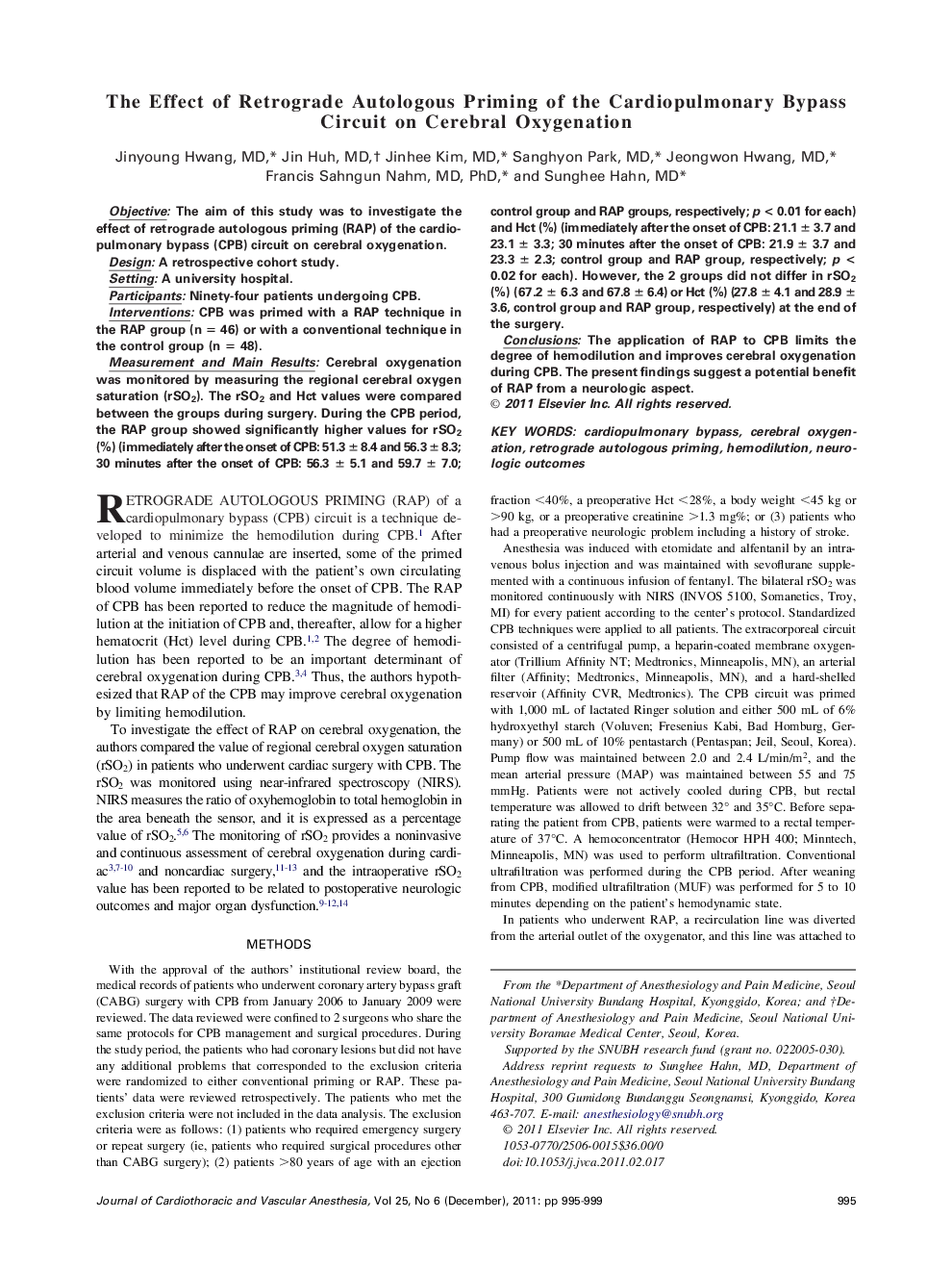| Article ID | Journal | Published Year | Pages | File Type |
|---|---|---|---|---|
| 2760857 | Journal of Cardiothoracic and Vascular Anesthesia | 2011 | 5 Pages |
ObjectiveThe aim of this study was to investigate the effect of retrograde autologous priming (RAP) of the cardiopulmonary bypass (CPB) circuit on cerebral oxygenation.DesignA retrospective cohort study.SettingA university hospital.ParticipantsNinety-four patients undergoing CPB.InterventionsCPB was primed with a RAP technique in the RAP group (n = 46) or with a conventional technique in the control group (n = 48).Measurement and Main ResultsCerebral oxygenation was monitored by measuring the regional cerebral oxygen saturation (rSO2). The rSO2 and Hct values were compared between the groups during surgery. During the CPB period, the RAP group showed significantly higher values for rSO2 (%) (immediately after the onset of CPB: 51.3 ± 8.4 and 56.3 ± 8.3; 30 minutes after the onset of CPB: 56.3 ± 5.1 and 59.7 ± 7.0; control group and RAP groups, respectively; p < 0.01 for each) and Hct (%) (immediately after the onset of CPB: 21.1 ± 3.7 and 23.1 ± 3.3; 30 minutes after the onset of CPB: 21.9 ± 3.7 and 23.3 ± 2.3; control group and RAP group, respectively; p < 0.02 for each). However, the 2 groups did not differ in rSO2 (%) (67.2 ± 6.3 and 67.8 ± 6.4) or Hct (%) (27.8 ± 4.1 and 28.9 ± 3.6, control group and RAP group, respectively) at the end of the surgery.ConclusionsThe application of RAP to CPB limits the degree of hemodilution and improves cerebral oxygenation during CPB. The present findings suggest a potential benefit of RAP from a neurologic aspect.
